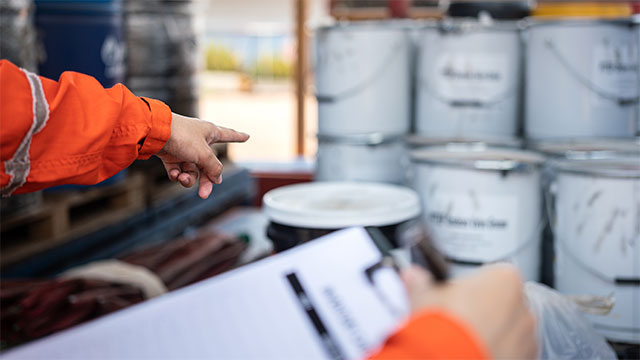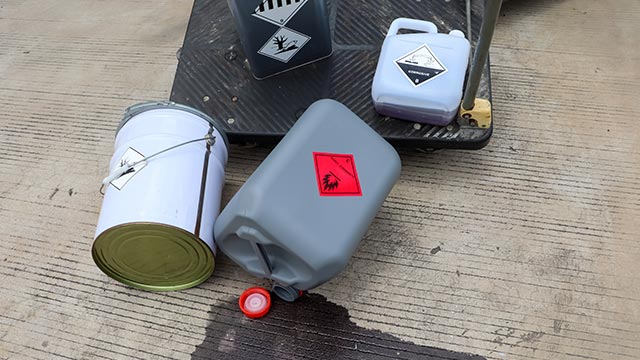Keeping a safe workplace is one of the essential responsibilities of employers and employees alike. Establishing protocols for reporting potential health and safety hazards in the workplace can help prevent workplace injuries and keep workers safe. In this blog, we'll go through how to report health and safety issues in the workplace, providing you with all the information you need to create your protocol.
What Is Hazard Reporting?
A workplace health and safety hazard is any condition or activity that has the potential to cause harm or injury to employees or others in the workplace. Risks can be physical, chemical, biological, or psychological. It may include:
- Slips, trips, and falls;
- Exposure to hazardous materials;
- Heavy machinery and equipment;
- Ergonomic issues; or
- Noise and vibration.
They can also include non-physical hazards such as:
- Harassment
- Bullying
- Discrimination
- Mental health issues
- Psychological stress
Reporting a hazard in the workplace is a critical task for employers and employees. Hazard reporting refers to identifying, reporting, and documenting potential health and safety issues in the workplace. Its goal is to identify and address potential dangers before they cause injury or harm to employees or others and to promote a safe and healthy work environment.

Hazard Reporting vs. Incident Reporting: Are They the Same?
No, hazard reporting and incident reporting are not the same things. Incident reporting is a process for recording incidents or near misses that have already occurred, while hazard reporting is a process for identifying and flagging potential hazards.
When discussing workplace safety, it is essential to understand the difference between an incident and a hazard. A hazard is any object or situation that has the potential to cause harm to persons, damage to property, or damage to the environment. An incident is an unplanned event resulting in injury, ill health, or other loss.
An incident report is for investigating and addressing such events. On the other hand, you can use a report to identify potential risks before they occur. Implementing safety measures based on these hazard reports can help prevent these risks from becoming incidents.
What Hazards Should You Report?
Physical hazards
Physical hazards in the workplace can cause bodily harm or injury to employees. These include exposure to chemicals, electricity, temperature extremes, and loud noise. The most common effect of physical hazards is musculoskeletal injuries due to manual labour, but others, such as cuts, bruises, and burns, must also be considered.
Safety Hazards
Safety hazards are risks posed by the environment, equipment, and interaction between people. These include inadequate ventilation, improper storage of hazardous materials, tripping hazards, and the misuse of machinery.
Psychosocial Hazards
Psychological hazards in the workplace can cause harm or distress to employees, such as repeated exposure to stressors, intense workloads, bullying, and harassment. These hazards can be challenging to identify as they may not always be physical but can negatively affect an employee's mental health.
Chemical hazards
Chemical hazards are any chemicals or substances used in the workplace that present a potential risk of harm. This includes inhaling fumes, skin contact with hazardous chemicals, and spills. Employers must ensure employees have the proper safety equipment and training on handling these materials safely.

Biological hazards
Biological hazards like contact with germs or viruses can be present in any workplace. Jobs that involve working with animals, cleaning, or medical care may have a greater risk of exposure.
Electrical hazards
Improper wiring or defective equipment can cause electric shocks, fires, and explosions. Protecting workers from these risks is essential by using proper electrical safety equipment, and any damaged wires, outlets, cords, or appliances are reported immediately.
Responsibility To Report Hazards in the Workplace
The duty of reporting hazards rests on the people responsible for ensuring the safety of employees in the workplace. These typically include:
Employee or worker
Employees are responsible for reporting any hazards they identify in the workplace to their employer or manager. Employees should be aware of their obligations to say threats and be familiar with identifying potential dangers in the workplace.
Health and Safety Representatives (HSRs)
Workers elect Health and Safety Representatives (HSRs) to represent them concerning health and safety matters. In some cases, HSRs may be responsible for identifying hazards in the workplace and taking appropriate action with them.
Workplace Manager/Supervisor
It is the responsibility of managers or supervisors to ensure that workplace hazards are identified and reported. They should also ensure safety measures are in place to reduce the risk of injury or illness and regularly inspect their workplace for potential hazards.
Some organisations may have a specific department or individual responsible for safety, such as an Occupational Health and Safety (OHS) department, a safety officer, or a health and safety committee, who would be the appropriate person to receive a hazard report.
Remember that hazard reporting is a process intended to protect employees from harm and help promote safe work practices. We'll discuss the procedure for reporting hazards in the next section.
Hazard Reporting Process
You should submit the hazard report to the appropriate person or department within the organisation. Depending on the size and structure of an organisation, this may be a manager, supervisor, health and safety representative (HSR), Workplace Health and Safety Officer (WHSO), or health and safety committee.
Following the organisation's established reporting procedures and protocols is essential when submitting a hazard report. Some organisations may have an electronic reporting system or a hotline for reporting hazards, while others may prefer information to be submitted in writing.
Steps in reporting health and safety hazards
You can follow the following steps in developing your hazard reporting system:
- Identify the hazard: Be specific about it, its location, and how it could cause harm. You should also include any existing safety measures.
- Describe the risk: Explain how the hazard could cause harm, such as a fire, shortage of oxygen, or chemical exposure.
- Recommend solutions: Suggest any potential solutions for addressing the hazard, such as installing additional safety measures or implementing changes to procedures.
- Notify your supervisor or the person in charge: This can be done verbally or in writing.
- Document the hazard: Record the details, including when and where it is found and any actions to address it.
- Follow-up: Ensure appropriate measures are taken after addressing the hazard to prevent it from happening again.
Hazard Report Form
Many workplaces have a standardised hazard report form that should be filled out and submitted. This form should include detailed information about the hazard, such as its location, severity, potential consequences, and any recommendations for addressing it.
A hazard report form may vary, but the important thing is to make sure that the form captures the vital information about the hazard, the potential consequences, and the recommendations for addressing it, as well as the contact information of the person reporting the risk.
What should the report include?
- Description of the hazard - The report should detail the risk, including its location, potential consequences, and any relevant information to help identify it.
- Date and time of the hazard - The date and time when the risk was first seen or observed.
- Identification of the person reporting the hazard - Include the name, contact information, and position of the person reporting the risk.
- Any existing safety measures - Describe any actions taken to address the hazard or any safety measures already in place.
- Photos or video - It would be helpful to include pictures or videos of the hazard that show its location and potential consequences.
- Evidence - Include evidence supporting the hazard, such as previous incidents, near-misses, or test results.
- Recommendations - These are suggestions for correcting or eliminating the hazard, and any interim measures workplaces can take to mitigate the risk.
You can also use a checklist or a step-by-step guide to identify workplace safety issues and report them. The checklist should include a list of items to be checked, such as placing the nature and location of the risk, assessing its severity, and describing any existing control measures.
Safety Program
It is not enough that you use a report form right away. You should also implement a safety program in your workplace. The program involves every employee undergoing training on identifying and avoiding hazards. Hazard Reporting is a crucial component of this training.
This training could be a required:
- All-day in-person training sessions for high-hazard positions, such as in manufacturing or construction
- On-the-job training guided by an experienced supervisor
- 30-minute safety meeting
Tips to Improve Hazard Reporting
If workers are disinclined to report dangers or risks at work, here are some ways to improve the hazard reporting culture in your safety program.
- Make reporting as simple as possible. Be concise with forms, and make sure they are easy to fill out.
- Create an anonymous reporting system. This can encourage workers who may need to be more comfortable speaking.
- Hold regular discussions or toolbox talks to reinforce hazard reporting. When workers feel comfortable bringing up any new risks they discover, they will be willing to report them.
- Provide incentives or rewards for hazard reporting. Workplaces should extendRecognition to individuals who report hazards.
- Engage workers in hazard resolution. Ensure the solution satisfies all parties and doesn't unintentionally lead to more issues.
- Keep the lines of communication open on safety concerns. Let workers know that their input is valued and appreciated.
- Regularly review safety policies and procedures to ensure they are up-to-date with changing workplace regulations and best practices.
- Never place the blame for discovered risks on a specific person. Attribute risks to "systems" instead, such as the inadequate budget allocated for tool replacements, a lack of training, or the requirement for an extensive procedure.
- Place signs or banners. Remind people that they must report dangerous behaviours and situations throughout the workplace.
Complete Your Safety Measures with SafetyDocs
Everyone in the workplace is responsible for providing a safe and healthy work environment, and they should have a system in place for employees to report hazards. SafetyDocs by SafetyCulture offers a wide range of safety documents and forms, including what your workplace needs for hazard reporting. It also has in-depth safety procedures to ensure a safe workplace, documents to connect with suppliers, workers, and customers, and other risk management tools.
We make it easier for you to follow safety standards for keeping workplace safety in check. For ease of use, here are some safety documents you may use for managing hazards:
- Hazard Report Form
- Plant & Equipment Hazard Register
- Chemical Risk Assessment Form for Chemical Hazards
- Incident/Near Miss/Hazard Report Register
Our team of experts is dedicated to providing accurate and informative content. Craig Cruickshank, our senior HSEQ advisor at SafetyDocs by SafetyCulture has reviewed this blog post to ensure the highest level of quality.
Learn more about Craig's work on LinkedIn for more industry insights.
Available for instant download and supplied in fully editable MS Word format for use in your business.
Please note that the above information is provided as a comment only and should not be relied on as professional, legal or financial advice.
Share This Article
